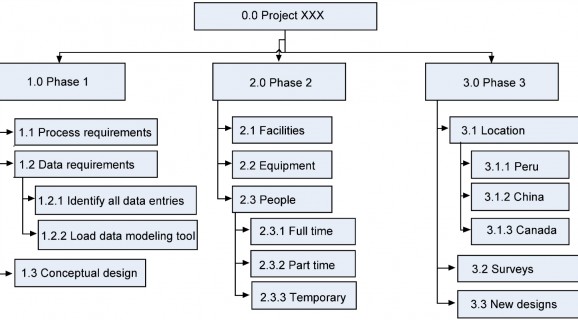
The Work Breakdown Structure (WBS) the first step in scheduling your project.
The use of computerised scheduling tools has detrimentally diluted the importance of the WBS. There is a perceived urgency to start entering Activities and Tasks into a Gantt chart. Then to discover that there are themes or tasks that should be logically grouped together. For a small a project going straight to a Gantt chart is possible. However once a project starts to get more complex this ad hoc approach is hard work.
This is where the WBS comes into its own …. it is the step before creating the Gantt Chart.
The WBS is the logical process of subdividing a project into smaller more manageable components.
Before starting the WBS the project scope must be reasonably well developed. As with all project planning it is a reiterative process and will need multiple versions prior to achieving a well-structured WBS.
A WBS is a hierarchical representation of the project deliverables with the level of decomposition guided by the degree of control needed to manage the project effectively.
The WBS structure may be created using various approaches such as:
- Using project life cycle phase, or
- Major deliverables
The WBS is usually displayed in a tree diagram (e.g. organisation chart size) or a table (matrix).
Don’t forget the accompanying WBS dictionary. The WBS dictionary provides detailed deliverable, activity, and scheduling information about each component in the WBS. It may include:
- Code of account identifier,
- Description of work,
- Assumptions and constraints,
- Responsible organization,
- Schedule milestones,
- Associated schedule activities,
- Resources required,
- Cost estimates,
- Quality requirements,
- Acceptance criteria,
- Technical references, and
- Agreement information.
